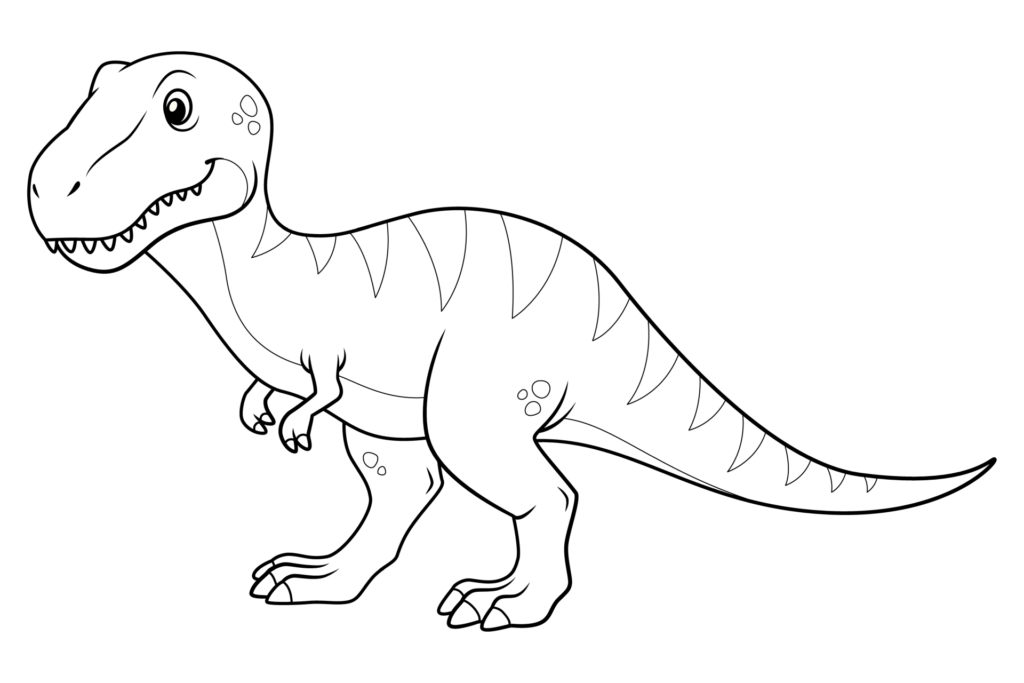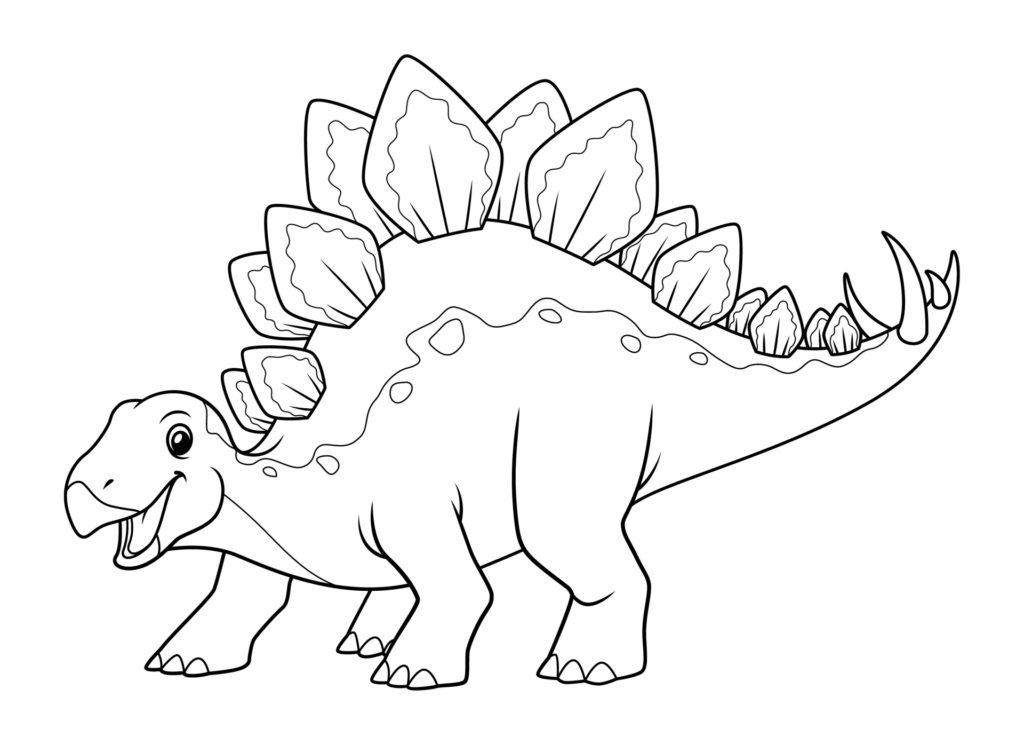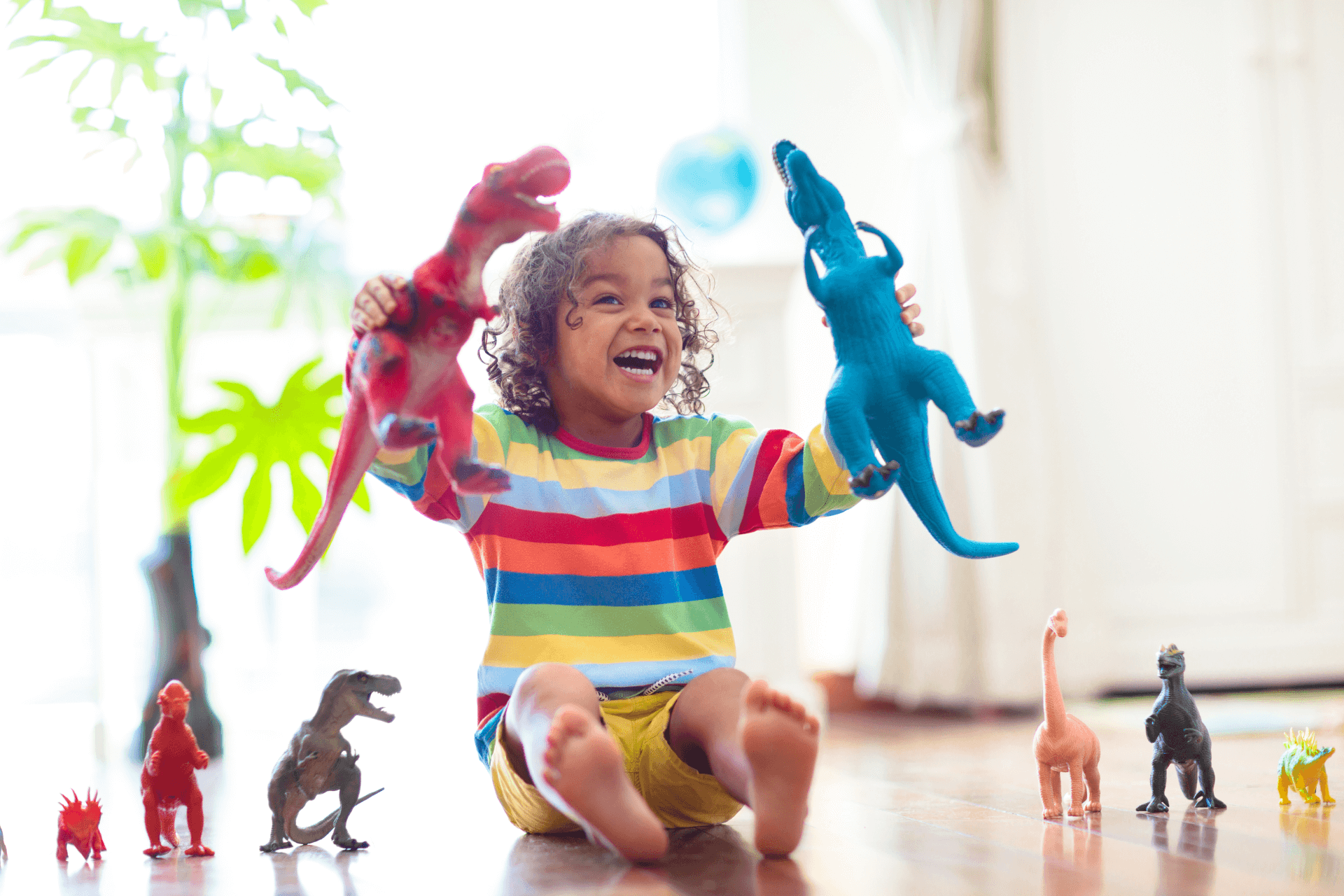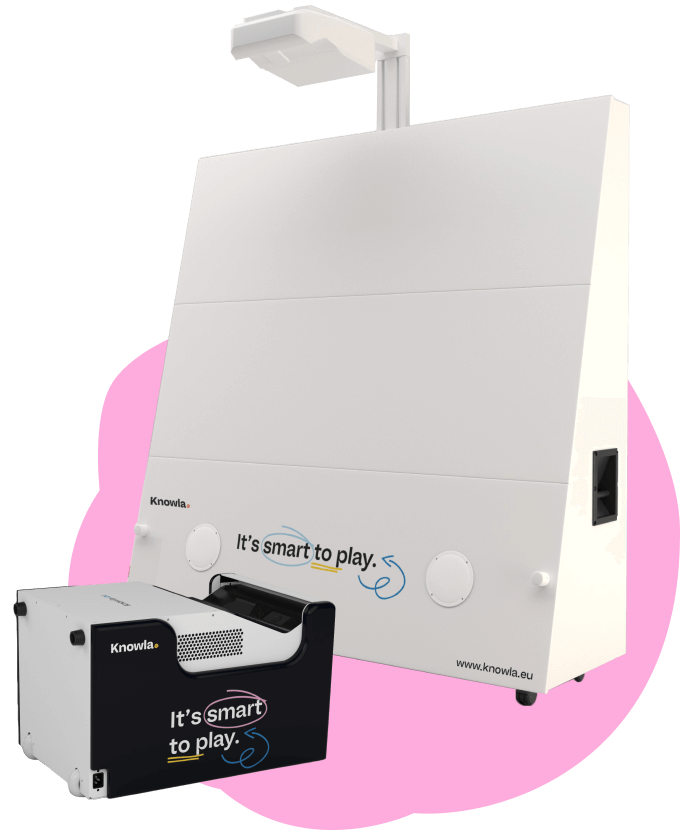Below you will find a set of dinosaur-themed games for children. They can be used as part of educational activities in this area or as a theme for a birthday party. February 26, when we celebrate Dinosaur Day, may be a special date.
Watch out for the lava!
We create dinosaur shoes out of tissue boxes. We glue their claws and tape or color them as desired. You need at least one pair of feet (it’s worth having a spare pair, though).
As part of the game, the child puts on dinosaur shoes on his feet and positions himself in front of a switched-on Knowla Box with a display on the floor. We turn on the Walking on Footsteps app, which is located in Planet Contrast. The participant in the game must stay on the surface of the lava for as long as possible and must not stay on any rocks other than those with footprints. The rest of the group counts how many steps he has endured. When the game is over, he gives the shoes back to the next person in line.
Another variant of the game can be to walk on all fours like a dinosaur and fit on lingering rocks. For this variant, we need shoes for all four limbs (arms, legs).
Where did they hide?
Dinosaurs can seem scary. In this prehistoric world hid our creatures, you just need to find them. The application is available on Knowla Box, Planet Contrast under the name: Where is the monster? To correctly solve the puzzle, the child must trace the board with a magnifying glass and click only on those creatures that appear on the initial activity board.
What does a dinosaur eat?
Cut out the heads of two dinosaurs from paper. One of them should be a carnivore e.g.: Tyrannosaurus rex. The second one of the representatives of herbivores e.g.: Stegosaurus. In the basket, place balls with pictures of meat, leaves or fruit glued on them. The children’s task is to feed the hungry dinosaurs according to their preferences.
If you have figurines or additionally printed images of dinosaurs, you can also have the children assign them to the correct table with meat or vegetable dishes.


Fossils and excavations
Together with the children, we prepare dinosaur skeletons or various types of fossils (by imprinting or cutting out shapes) from salt mass. After it dries, we can have fun digging. Just pour some sand into the container and hide the fossils and skeletons in it. Children will slowly brush their fingers to discover more finds. Then wonder what they represent or assemble the skeleton of their first dinosaur.
Dinosaur trackers
We hide dinosaur figures or their cut-out paper figures in the room. There should be more of them than children. The children’s task is to find them all. They can use binoculars or magnifying glasses. At the end, each of them counts how much they have. Their number will correspond to the number of balls (plus one, if there are children without dinosaurs) he will receive for the activity: Eggs(Planet Fruu, Wall Activities). If the child did not find any, he gets one ball.
What are they doing in hiding?
We divide the class into two groups. The first one impersonates dinosaurs. They can be disguised, but it is not necessary. Their task is to perform various activities they draw (they can refer to actual dinosaur activities or represent more human ones). The second group is tourists who want to observe dinosaurs in their “natural” environment. Their task is to guess what the dinosaurs are currently doing. The game is somewhat reminiscent of puns.
In another variant, dinosaurs are also free to play, act or perform any activity. Tourists pretend to be paparazzi and peep or “chase” dinosaurs, taking pictures of them.
Other dinosaur activities in the Educational Universe
- Connect the dots
- Draw slides
- Complete the jigsaw puzzle
- Connect the pictures
- Count the animals


